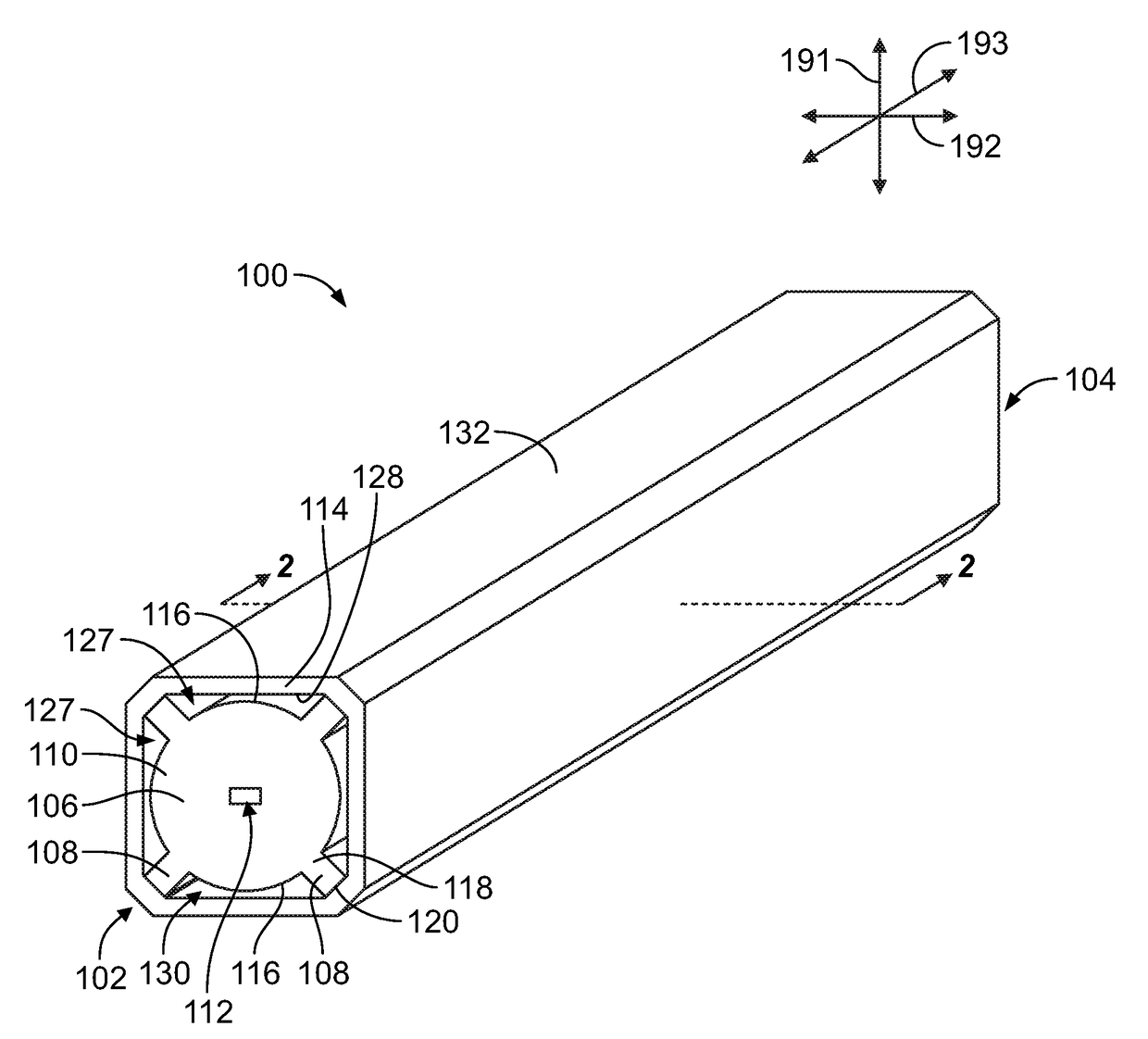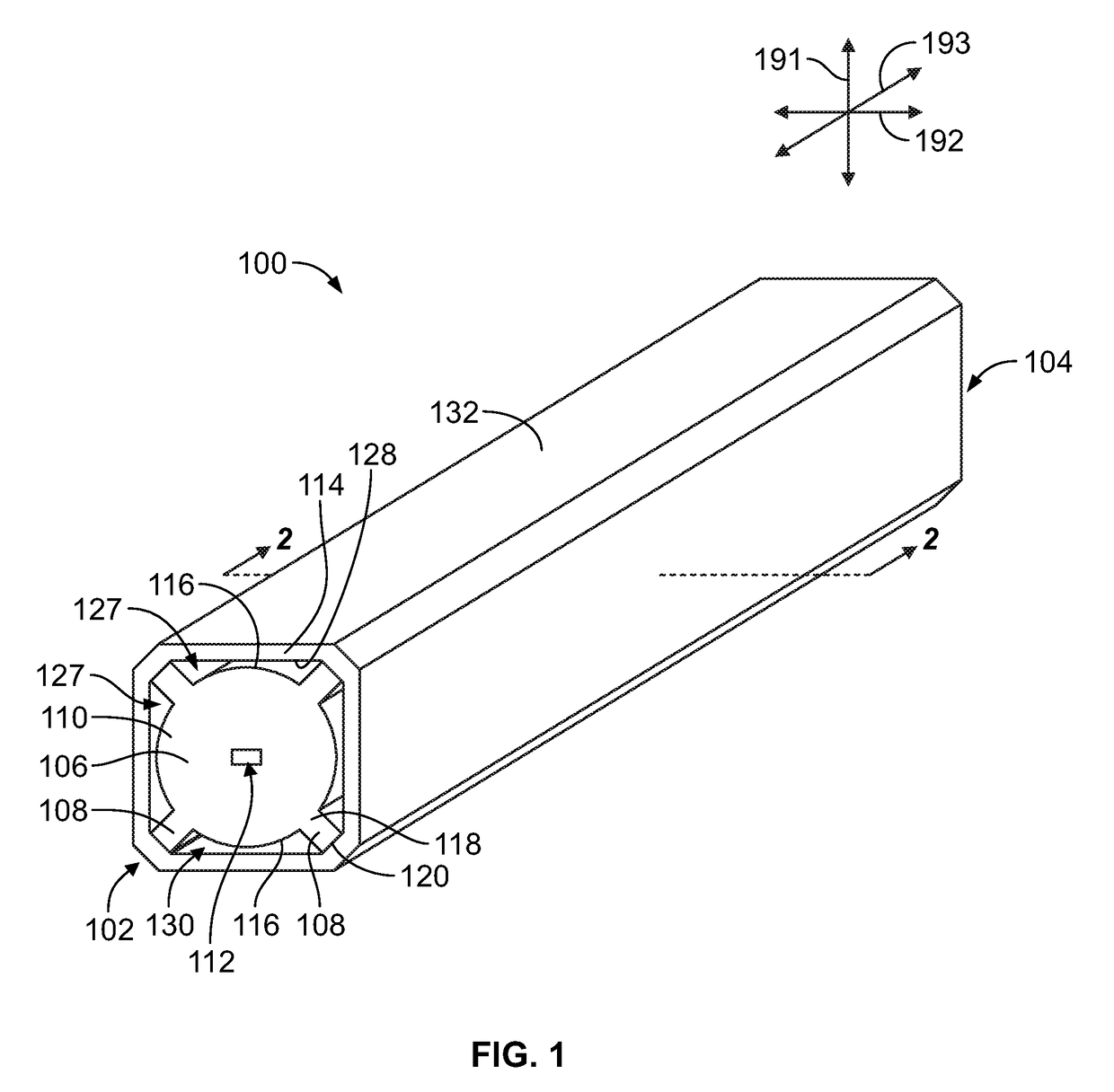Dielectric waveguide
a waveguide and dielectric technology, applied in waveguides, screening casings, electrical equipment, etc., can solve the problems of inter-signal interference, increased crosstalk, undesired electrical effect called dispersion,
- Summary
- Abstract
- Description
- Claims
- Application Information
AI Technical Summary
Benefits of technology
Problems solved by technology
Method used
Image
Examples
Embodiment Construction
[0018]One or more embodiments described herein are directed to a dielectric waveguide for propagating electromagnetic signals. The embodiments of the dielectric waveguide have a conductive shield placed on the outside of the waveguide in a way to reduce crosstalk and other external interference while at the same time not introducing unwanted mode propagation or undesirably high levels of loss in the waveguide. Lower loss levels allow the waveguides to convey signals farther along a defined path. In one or more embodiments, dielectric extension structures extend beyond a cladding layer and support an electrically conductive shield, such as a metal foil. The extension structures optionally may be extrusion molded as part of the cladding layer of the dielectric waveguide. The extension structures engage and support the shield at locations spaced apart or away from an outer surface or boundary of the cladding such that air-filled gaps or pockets are defined between the cladding and the ...
PUM
 Login to View More
Login to View More Abstract
Description
Claims
Application Information
 Login to View More
Login to View More - R&D
- Intellectual Property
- Life Sciences
- Materials
- Tech Scout
- Unparalleled Data Quality
- Higher Quality Content
- 60% Fewer Hallucinations
Browse by: Latest US Patents, China's latest patents, Technical Efficacy Thesaurus, Application Domain, Technology Topic, Popular Technical Reports.
© 2025 PatSnap. All rights reserved.Legal|Privacy policy|Modern Slavery Act Transparency Statement|Sitemap|About US| Contact US: help@patsnap.com



